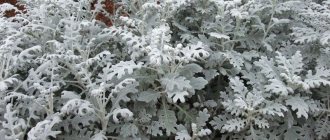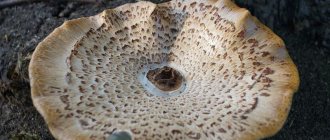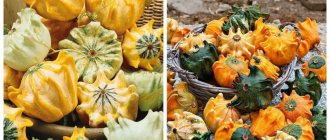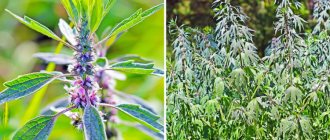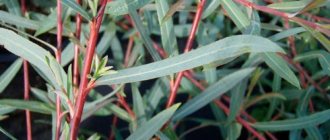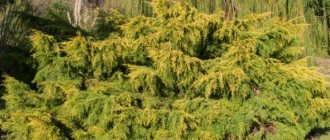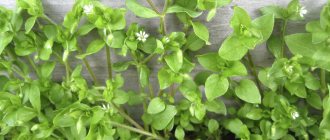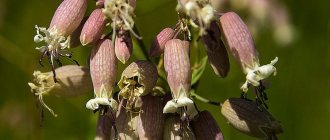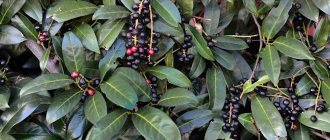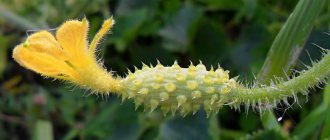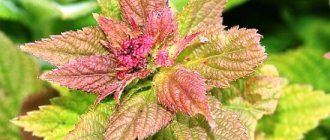Brittle or spherical willow (Salix fragilis) is also popularly called broom. It just seems that the willow is just that same tree that grows near bodies of water and bends its branches low towards the water itself. In fact, this species has many representatives, and brittle willow is just one of them. Its peculiarity is that in the process of evolution it has learned to reproduce itself through its own branches, and not with seeds, as hundreds of other trees do.
In everyday life, brittle willow is popular for its special qualities and usefulness; we will talk about these amazing features today.
Botanical characteristics
Brittle willow (globular, willow).
Brittle globular willow, translated as Salix fragilis. Its other name is brittle willow. It is a tall tree that can grow even up to 20 meters. It is covered with a rather shiny bark, and the old one can be easily removed in small plates. Directly at the base, the branches are quite brittle, so they often break during strong gusts of wind.
The leaves are alternate, their shape is narrowly ovate or lanceolate, the length can reach up to 15 centimeters, they have an oblique apex, glandular-toothed, slightly pubescent, and sticky. Flowers in earrings, yellowish scales, fruit in the form of a box.
How to choose the right landing site
Rakita, however, like other representatives of this family, is a big fan of wet places and the proximity of water bodies. Wet, shaded areas are an ideal place for its growth. It will feel great both in sunny places and in the shade, the composition of the soil is not important for it, since there are no special preferences for the soil, it will grow on any soil, the main thing is that its acidity does not exceed 7.5.
When a willow sheds its branches under the influence of the wind, germination can occur in sandy soil, and in more viscous, clayey soil, and even more so on fertile black soil, and there is no need to worry about the depth of the root collar, in this case, it does not matter, for The formation of roots requires only the presence of moisture. If you planted brittle willow on your site or near your house, you should water it at the first stage of life, but as for older plants, it is better not to touch them; they tolerate digging very hard and often die.
Spread of brittle willow
This plant grows in the European part, it usually grows in the form of thickets, prefers damp places, for example, it is localized along the banks of rivers and lakes, in floodplains. You can often see brittle willow near dams, as well as near human habitation.
The tree, 15-20 m high, is decorated with a tent-shaped crown with brittle ropes - that’s why the plant has such a name. The shoots are bare and shiny, olive green with a reddish tint. Young shoots are sticky. The buds are black, bare, and also shiny. Leaves, up to 15 cm long, lanceolate with a short pointed tip. The underside of the leaves is dark green, shiny, the lower side is bluish-light green. Flowers appear along with leaves.
It grows well on clayey and moist soils near water bodies and in areas where groundwater is located close to the surface. Propagated by cuttings. Brittle willow bark contains tannins; it is good to use for diarrhea. There are flavonoids, glycosides, a decoction of the bark is useful for neuralgia, neuroses, rheumatism, gout, malaria, gastritis of the stomach, diseases of the spleen and liver. The remedy is also effective for gynecological and infectious diseases.
Protect from diseases and pests
Spherical species are susceptible to attacks by pests that can destroy an adult tree:
| Willow weevil Larvae developing in the bark can damage the growth zone and destroy the tree. Signs: loss of leaves, drying out. Fight: removing damaged areas | |
| Aphid Destructive for young branches. Signs: a colony of larvae settles on young branches and oppresses them. Fight: spraying twice with a kerosene-soap solution is required - 200 ml of kerosene and 50 g of green soap per 7 liters of water | |
| Willow leafhopper Signs: egg clutches destroy the bark and the branches dry out. Fight: lubricating cracks with tar (garden pitch, glue), bait traps for bugs | |
| Leaf beetle Signs: blackening of foliage and denudation of branches. Fight: catching |
Dangerous diseases of willow plants : fungus - heart rot, brown spot, willow scab, powdery mildew, bark necrosis, rust.
The photo shows willow scab. All fungal diseases are eliminated by spraying with fungicides
Medicinal properties
Since time immemorial, magical properties have been attributed to this valuable shrub. White willow bark has antipyretic (due to the content of acetylsalicylic acid), astringent, anti-inflammatory, diuretic, anthelmintic and diuretic effects. Tea made from fresh leaves relieves fatigue; using a willow broom in a bathhouse treats osteochondrosis and gout. The quinine it contains is a powerful anti-malaria agent.
Positive results have also been achieved in the treatment of gastrointestinal diseases and diarrhea. Willow is also used externally: for rinsing the mouth, throat, douching, for varicose veins, sweating feet, and skin diseases. The plant is used as a sedative, anti-fever and wound-healing agent, and a weak decoction of the bark treats weakened and brittle hair, saturating it with all the necessary substances.
The medicinal raw material is the bark of young trees, which is carefully collected in April before the first leaves bloom. It is in this month that it easily peels off from the wood. Dry under a canopy with good ventilation.
Less commonly, earrings are used for medicinal purposes; they are collected during flowering and dried in a shady place. The resulting dry extract is stored for 4 years, preferably in paper and cardboard containers.
Collection and procurement of raw materials
To collect the bark you will need a sharp knife; you can use it to carefully cut off the required amount of raw material. Next, it should be cut into pieces, after which it is placed on a pallet, which is pre-lined with paper, and the container is placed in a well-ventilated room.
Then you need to turn the bark over every day so that it does not become damp, as this can lead to its rotting, as a result of which the raw material will become unsuitable for further use.
When the bark acquires a characteristic crunch, this will indicate its readiness, and you can put it in cloth bags or boxes for further storage.
The container with the finished raw materials is placed in a ventilated and dry room, where it will be stored and used as needed. The shelf life of the bark is limited to four years, after which it is not recommended to use it, as it will lose its healing properties.
Planting and care
Ball willow grows quickly. Cuttings are harvested in the fall, and in the spring, when the buds begin to bloom, they are planted. Willow thrives in slightly acidic soil. How to plant willow correctly:
- if the soil is very dense, then it is recommended to add sand to it;
- a hole is prepared, 50 cm deep;
- Fertilizer must be added to the prepared soil mixture;
- the shoot is placed in a recess and sprinkled with earthen mixture;
- The plant needs abundant watering after planting.
The globular willow is unpretentious in care. If you plant the plant in the right place, where it will be provided with water, then care will only be needed to give it a decorative appearance, and will consist of shaping the crown to the taste of the owner. In hot weather, you may need to water once a week, 40 liters per large bush, and timely irrigation of the crown. It is recommended to feed with fertilizers twice a year along with watering.
Application of brittle willow
The bark is used by folk healers in the form of bitterness for poor appetite; infusions and decoctions are prepared from it, which are used for impaired digestion. Healers also use this raw material in the fight against infectious diseases such as malaria, replacing quinine with this bark.
Medicines prepared from brittle willow are used as an astringent in cases of impaired evacuation function, in particular in cases of diarrhea. In addition, the decoction also has an anti-inflammatory effect, it is recommended to use it for joint damage, for example, rheumatism and gout.
The bark also has a tonic effect; it is useful to brew it at low pressure, and use the prepared decoction or infusion internally to increase it. Externally, the drugs are used for skin diseases, abrasions and trophic ulcers, prescribed for furunculosis, and they are also effective for excessive sweating of the feet.
In addition, it is customary to rinse the mouth with an infusion or decoction if there are inflammatory diseases in it, and it is recommended to carry out these procedures up to several times a day, after which the inflammation gradually subsides.
Use in landscape design
Designers like to use globular willow in the interior of the garden in the form of a hedge, as a single plant, or in composition with other trees of different or the same species.
To get a willow hedge, the seedlings must be planted at a distance of one and a half meters from each other. Shady alleys are planted in the same way, only for this it is necessary to form a second row of trees. To make the view more spectacular, the branches above the alley can be connected. It takes no more than two years for the branches to close completely and form a green tunnel.
Experienced gardeners can create truly amazing figures of any shape from willow. You can plant one spherical willow, creating scenery around it using stone and wooden decorations. You can create a Japanese corner in the garden that will delight the owners with its appearance in any season.
In large areas where there are small lakes and clear ponds with beautiful fish, the willow will look great at the very edge of the water, creating shade for garden visitors walking in the heat. Under such a tree you can place a bench or a swing.
Infusion recipe
You can prepare an infusion, which is then recommended to be taken for medicinal purposes. To do this you will need bark, boiling water and a regular small thermos. The raw materials must be crushed; for this purpose, you can use a ceramic mortar and pestle to grind the required amount.
Then you need to take 15 grams of crushed bark and pour it into the prepared thermos. Next, you need to pour boiling water into the container; 400 milliliters will be enough. Then the container is closed and infused overnight.
In the morning the infusion will be ready, but before using it, you need to filter it to rid the liquid of the dense part of the crushed bark present. To do this, you can use gauze, but it’s better to first fold it in two layers and pour the medicine.
After which you can drink the infusion three times throughout the day, about forty minutes before meals. You need to put it in the refrigerator and take it out only when needed. If you leave it in the room, it will begin to deteriorate and will no longer have the proper medicinal effect on the body.
Planting globular willow in open ground
It is most convenient to plant the plant from cuttings, which you can obtain yourself or purchase from a nursery. They can be planted without preliminary preparation, but it is advisable to soak the roots in a warm solution of a growth stimulator immediately before planting.
Planting can be carried out almost any time, starting from the second half of April and ending with the first week of September. Step-by-step algorithm:
- In the prepared area, dig a hole up to 40 cm deep and 45-50 cm wide.
- Fill one third of the depth of the hole with a nutrient composition of dry peat, compost and fertile soil in equal proportions.
- Spread the roots on the seedling, clean them of any remaining soil. Treat with a 1% solution of potassium permanganate and carefully deepen it into the planting hole.
- Add soil to the hole and compact the top layer. Water the plant generously with warm water at the rate of 8-10 liters per plant.
If you plant a plant in the fall, then the area around the tree trunk should be immediately mulched with peat or sawdust in a layer of up to 5 cm to avoid exposure to frost.
Powder recipe
You can prepare a medicinal powder from brittle willow bark; for this you will need the dry raw materials of this plant, after which it is recommended to place it in an electric coffee grinder and grind until the bark takes on a crushed form.
Then the bark, ground to a powdery state, must be poured into a prepared dry jar, after which it should be tightly closed, and then placed in a dark and dry place, and used as needed.
For example, you can make a poultice with this powder; to do this, pour it into gauze and roll it up in the form of a bag, then scald it with boiling water, and then, when it cools down, you can apply it to the inflammatory formation on the skin.
Reproduction of globular willow
Reproduction of globular willow is usually carried out by vegetative methods: cuttings or rooting in water. In the first case, you need to carefully select the material for planting, which a special nursery will definitely help you with.
Globular willows in the nursery
The optimal period for willow propagation is early spring. Young shoots are cut (the lower cut must be oblique) about 30 cm long. Each shoot must have at least 5 fully formed buds.
It is advisable to choose a planting site with moist soil: a wetland or area with close groundwater is ideal. A few hours before propagation begins, it is advisable to immerse young shoots in a solution with biostimulants to “wake up” the plants. After this, you can safely plant in open ground.
If you bought planting material in the fall, you need to take care of its preservation until spring. To do this, just carefully wrap the shoots in polyethylene and place them in a room with a cool, damp environment (a basement is perfect for these purposes).
When propagating plants using the second method, cuttings are cut in the spring, immediately before planting, and placed in containers filled with water. Small cuts can be made at the bottom of each branch to encourage root formation. As soon as the first roots grow on the cuttings, they can be planted in nutritious, moist soil.
Application of broom
Decoction and powder of the bark are used as an external remedy. Due to their bactericidal properties, these products are suitable for treating wounds and eliminating inflammation in abscesses. Decoctions are used internally for dyspepsia and catarrh. Whooping cough and fever are well treated. With chronic rheumatism, the general condition noticeably improves and pain goes away. As an astringent and anti-inflammatory agent, a decoction of the bark helps with stomatitis and gingivitis. Eliminates gastric and uterine bleeding, has a diuretic and choleretic effect.
Young shoots of broom have long been used in the treatment of scurvy. With the help of rakita, male and female diseases such as prostatitis and inflammation of the appendages are treated.
Decoction of broom bark:
Recipe No. 1: keep 20 g per 200 ml in a water bath for 15 minutes, leave, strain and drink 1 tbsp. spoon 3 times a day for rheumatism and 5-6 times a day for other diseases.
Recipe No. 2: 1 glass of boiling water, 2 tablespoons of finely chopped thin branches, boil for five minutes over low heat, covered. Cool, strain and take 3 times a day, 0.5 cups. Course 1 month (for men).
Recipe No. 2: 2 tablespoons of bark, 1 liter of water. Bring to a boil and then cook over low heat for 0.5 minutes for half an hour. Leave for 30 minutes, strain and drink 1/3 cup 5-6 times a day. Course 1 month (for women).
Rakita shoots are used for goiter with thyrotoxicosis. They are burned, the resulting ashes are mixed with honey 1:2 and taken 3 times a day 20 minutes before meals.
A broom made from broom is used in the bath to treat osteochondrosis and rheumatism.
Broom flowers
Rakita flowers are small, unisexual (male and female), without perianth, inflorescences - catkins. Traditional healers recommend using tincture of broom flowers for heart disease, tachycardia, and arrhythmia.
Tincture of broom flowers:
0.5 liters of vodka, 100 gr. flowers. Infuse the product for a month, take 3-4 times a day, 30-35 drops, diluting it in a spoon of water before meals.
Rakita flowers are useful for female and male infertility.
broom leaves
The leaves of the broom are bare, alternate, linear-lanceolate, sharply serrate. The lower leaf plate is slightly pubescent. Tea made from young leaves is useful, it has a tonic effect, relieves fatigue, the general condition of the body noticeably improves, and depression goes away. In folk medicine there is an old and very effective recipe for a concentrated, very thick decoction.
Decoction of rakita leaves: fill a 4 liter pan with plucked (in spring) leaves of the tree, sealing it well, add cold water, bring to a boil and simmer over low heat until a dark brown liquid with the consistency of sour cream is formed. Lubricate the thyroid gland area with such a concentrated decoction before going to bed, covering it with a napkin. You can wash it off in the morning and continue the course for 3-4 months.
ethnoscience
There are more than a hundred species of willow: brittle willow, purple willow, Russian willow...
Willow heals people with its bark, leaves, inflorescences, and perhaps not only that. Recently, people have begun to talk seriously about a number of trees as a source of bioenergy. In Ukraine, the willow is called the sadness tree, which not only sympathizes with the pain and illness of a person, but also “takes away” all this from the patient, alleviating his condition, especially if such unity with the willow is accompanied by a special spell. During sap flow, bark is taken from 3-4 year old branches. You just have to remember that you can’t cut down or tear off the bark from the willow, which grows at the very edge of the reservoir. The roots of the tree go all the way to the aquifer, and if the willow is painfully wounded, the water “leaves” and disappears.
Willow is popularly used for various neuroses, neuralgia, rheumatism, gout, colds, malaria, gastritis, inflammatory bowel diseases, jaundice, diseases of the liver and spleen (during periods when they are saturated with large doses of toxins), inflammation of the urinary tract. A decoction of willow bark has a beneficial effect on patients with pleurisy and chronic colitis, and an infusion of dried flowers has a beneficial effect on tachycardia and extrasystoles. Ointment made from bark powder treats wounds and ulcers. A decoction of the bark is used to rinse the mouth for sore throat, stomatitis, gingivitis, periodontal disease, and to wash the hair for hair loss (using burdock roots). Bark baths are recommended for varicose veins.
Treatment of prostatitis
Pour 2 tablespoons of finely chopped thin white willow branches with a glass of boiling water, close the lid and simmer over low heat for another 5 minutes. After cooling, strain. Drink half a glass 3 times a day. Course – 1 month. If the cure does not occur, switch to other decoctions (aspen or hazel bark, or choose another recipe, enhancing it with tincture of wintergreen, wintergreen or cocklebur).
Treatment of adnexitis.
2 tablespoons of bark per 1 liter of water, bring to a boil and simmer over low heat for 30 minutes. Leave for half an hour, strain. Drink 1/3 glass 5-6 times a day. The usual course is 5-6 days, but can last up to a month.
For goiter.
Burn young shoots, preferably basket willow, collect coals (not ash!), grind into powder and mix with double the amount of honey. Take 50 g 3 times a day 20 minutes before meals until you get tired, then move on to another type of treatment. (Referring to thyrotoxicosis.)
Treatment of thrombophlebitis and varicose veins:
Place 250 g of willow bark on a bucket of water, bring to a boil and cook gently for 15 minutes. Cool to a temperature of 37°C and take warm foot baths for 30 minutes, then give your feet a rest, preferably wearing thick or rubber stockings. It is advisable to do this until there is a lasting improvement.
For tachycardia and arrhythmia.
My heart failed me when I was young. Therefore, I used different plants and thanks to them I stepped into my seventh decade. One day in early spring I went out to collect bark and suddenly saw a purple willow blooming luxuriantly. Such beauty took my breath away. Let me think I’ll grab some flowers for medicine. I went up to the tree and mentally asked it for forgiveness: they say, I’m not taking it for fun, but for sick people. I collected fresh male inflorescences and doused them with vodka that same day. You need approximately 100 g of flowers per 0.5 liter of vodka. Of course, I did more, with a reserve. Let it sit for a month and strain. And then one person needed medicine: he was tormented by both tachycardia and arrhythmia. I gave him a bottle of tincture and told him to drink 30-35 drops daily, 3-4 times a day before meals, with a spoonful of water. How grateful he was to me later. If the pills hurt his liver, and they were of little use, but after a month he even looked younger and asked for the next course. And what am I saying: it’s not me, but the willow tree that needs to be thanked.
Tincture for tachycardia: 100-150 g. pour fresh or dry men's earrings with a bottle (500 ml) of vodka, put in a dark place for 21-30 days, then strain everything and drink 35 drops of tincture. three times a day for 10-15 days. After a month you can repeat the course.
Treatment of gynecological diseases, bleeding with willow bark.
For all gynecological diseases, especially bleeding, the following helps: pour 1 tablespoon of crushed bark with a glass of boiling water and leave for 5-6 hours, preferably in a thermos. Drink a tablespoon half an hour after meals 3 times a day. And for heavy uterine bleeding - 6-7 times a day, also a tablespoon.
The use of willow for numbness in the fingers, as well as pain in the neck, radiculitis.
Here you only need 1 teaspoon of finely chopped willow bark per 1 cup of boiling water. Cover with a lid and leave until cool. Take 1 tablespoon 4-5 times a day.
Using willow bark for sweaty hands.
Stir a teaspoon of willow bark powder in 2 cups of cold boiled water and leave for 8 hours. Keep your hands in this infusion for 5–10 minutes several times a day until this, albeit small, nuisance completely disappears.
Treatment of hypotension with willow bark.
Brew 1 tablespoon of bark with 2 cups of boiling water, leave in a thermos for 6 hours. Drink in 3 doses 20-30 minutes before meals - as a tonic for arterial hypotension.
Willow bark is contraindicated.
There are not just interesting, but also effective recipes for headaches due to nervousness, vasculitis, neurodermatitis - even the reduction of warts, but I have already gone over the limit allotted to me. After all, it remains to be said that the willow can become an obvious enemy. For example, not all heart diseases can be treated with its flowers - they are contraindicated in case of bradycardia. Bark decoctions for constipation further strengthen the stomach. It is undesirable to drink bark decoctions not only for gastritis with high acidity, but also for stomach and duodenal ulcers.
Varicose veins, thrombophlebitis, muscle fatigue
120 gr. Not too crushed willow roots are poured with 5 liters of water, the mixture is boiled and cooked over very low heat for 10-15 minutes. Then cool to a tolerable temperature and lower the legs into the broth until they cool. The decoction can be used up to three times with preheating. The number of procedures is until the condition improves (usually from 5 to 8 baths).
Diarrhea, uterine and gastrointestinal bleeding, ulcers, exacerbation of gastritis, gargling: we use white willow. Pour a handful of crushed roots into 250 ml of water, boil over low heat for 30 minutes, then squeeze everything out and bring the volume back to the original volume. Drink the decoction before meals (3 times a day) at the table. spoon.
You can brew a drink from fresh leaves by scalding them with boiling water. Juice or gruel is an excellent remedy against furunculosis, eczema, acne and other skin problems. It is advisable to apply or tie whole leaves to painful places, calluses and corns.
Astringent, hemostatic, disinfectant and diuretic
Willow bark is collected from thinner branches (no thicker than a finger), usually in the spring.
Willow bark is popularly used in most cases as an astringent, hemostatic, disinfectant and diuretic.
Willow bark decoction:
Brew 200 ml of boiling water with 1 tbsp of bark, cook over low heat for 20 minutes, strain. Drink 2 tbsp. l. 3-4 times a day for 30 minutes. before meals.
There is a belief that the willow has magical properties - it protects against troubles, misfortunes and evil spirits. Therefore, previously its consecrated branches were kept in houses.
You can get energy from willow; contact with it calms, relaxes, and helps eliminate headaches. To recharge, willow is most active from 6 to 9 p.m.
Traditional medicine uses willow bark internally and externally.
A decoction of willow bark for catarrh of the stomach and intestines.
A decoction of 40.0 g of dry bark per 1 liter. water for all catarrhs of the stomach, intestinal tract and indigestion.
For diseases of the spleen
Take a decoction (cook for 10 minutes) from a mixture of crushed willow bark and soapwort root in equal parts. Take 2 teaspoons of the mixture per 2 glasses of water. Typically, when this mixture is boiled and after straining, about 1.5 cups of liquid remains from 2 cups. Replenish the loss by adding water tincture of rose hips. Take 2 glasses of decoction per day. This is considered especially useful in infectious diseases, including pulmonary tuberculosis, jaundice, rheumatism and others, when the spleen and liver are overloaded (saturated) with large doses of toxin.
For women's diseases
For female diseases, drink a decoction of willow bark
1 teaspoon of decoction per glass of water, 2 such glasses per day.
For dysentery, drink a decoction of strawberry root and willow bark in sips:
For 500.0 g of water - strawberries - 8.0 g, willow bark - 10.0 g. Cook over low heat for 10 minutes.
External use of willow bark.
Willow bark powder is sprinkled on bleeding wounds. The dust of such a powder is sucked into the nose when blood comes from the nose, and they lie down on the bed without a pillow under their head.
For pain in the legs of people suffering from varicose veins, use warm foot baths (up to the knee) from a decoction of willow bark and oak bark, lasting half an hour. After the bath, put a bandage or rubber stockings on your feet and rest.
For dandruff and itching of the scalp and hair loss, wash your hair with a strong decoction of a mixture of willow bark and burdock roots, taken in equal parts.
For people recovering from a serious illness and prolonged lying in bed, with weak legs and trembling while walking, take about 20-minute foot baths in a strong decoction of willow bark.
